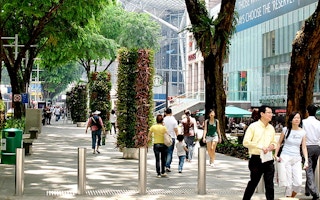Trees in cities reduce air pollution, absorb carbon and protect people during heatwaves, saving megacities more than $500 million a year in healthcare, energy costs and environmental protection, according to new research.
With one in ten people predicted to live in cities of more than 10 million inhabitants by 2030, urban forests can make these spaces healthier and more affordable, a study by the State University of New York (SUNY) said.
“Greening urban areas is critical,” the lead author, Theodore Endreny of SUNY’s College of Environmental Science and Forestry, told the Thomson Reuters Foundation.
“Trees are immeasurably important for human wellbeing and biodiversity, the underpinning of our quality of life.”
Urban forests can lower the “urban heat island effect” of cities, which are often several degrees warmer than nearby rural areas, worsening air and water pollution and making sweltering workers less productive, the study said.
“
Trees are immeasurably important for human wellbeing and biodiversity, the underpinning of our quality of life.
Theodore Endreny, College of Environmental Science and Forestry, State University of New York
Plants cool air around them through transpiration and their leaves block heat from the sun, as well as absorbing noise.
During heatwaves, set to become more frequent as temperatures rise, trees can cool buildings, potentially reducing the cost of fans and air conditioning, the study said.
The researchers, who focused on 10 megacities across the globe including Beijing, Moscow and Buenos Aires, found the benefits of urban forests could nearly double if more trees were planted in areas such as sidewalks, plazas and parking lots.
But urban conservation has been neglected in favour of larger, more remote natural areas, they said.
“If we focus our efforts outside the city, the biggest beneficiaries of (trees) are being neglected,” Endreny said, as more than 700 million people live in the world’s 40 megacities.
This story was published with permission from Thomson Reuters Foundation, the charitable arm of Thomson Reuters that covers humanitarian news, women’s rights, trafficking, property rights, climate change and resilience. Visit http://news.trust.org.










